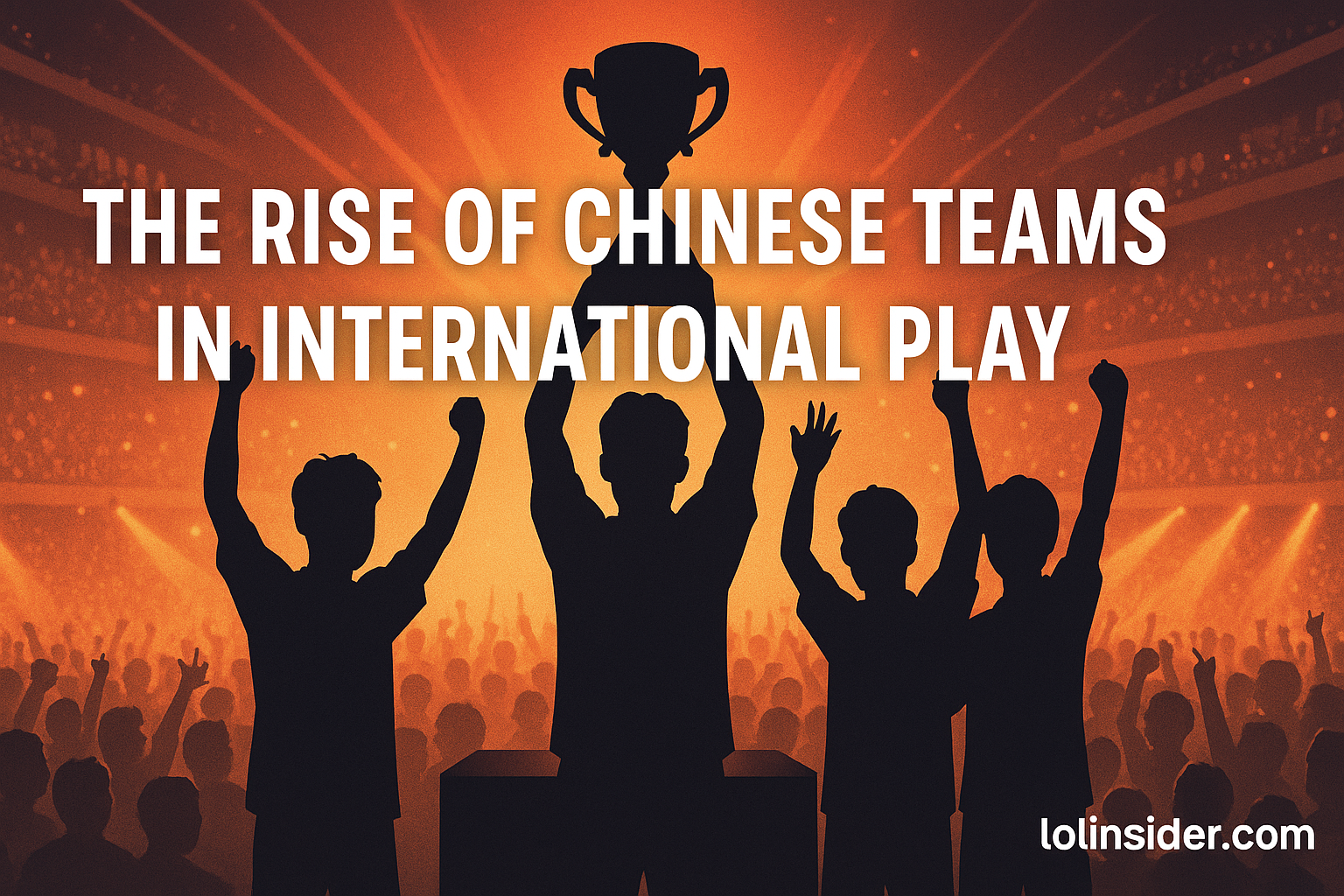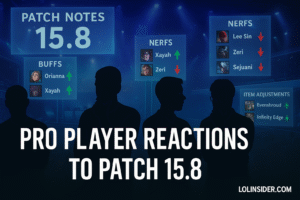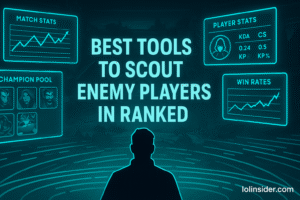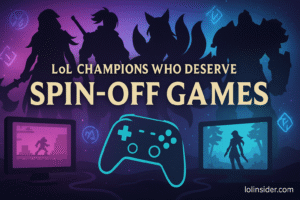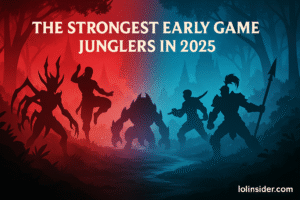The rise of Chinese teams in international play has been one of the most remarkable narratives in competitive League of Legends. Once considered underdogs compared to Korean and Western counterparts, Chinese teams have steadily grown into dominant forces, securing world titles, revolutionizing aggressive playstyles, and producing some of the most legendary players in the game’s history.
This article explores how China’s League of Legends scene evolved from regional obscurity to global dominance.
The Early Years: Struggling for Recognition
When League of Legends esports first launched in the early 2010s, Korea quickly established itself as the gold standard. China, while passionate and invested, struggled to keep up.
- 2012–2013: Chinese teams like World Elite and Invictus Gaming had talent but lacked international consistency.
- Season 3 World Championship: Royal Club reached the finals but fell to SK Telecom T1, highlighting the gap between Korea and China.
Still, these early appearances laid the groundwork for China’s eventual rise.
The Turning Point: Aggression as a National Identity
Chinese teams developed a signature style—relentless aggression. While Korean teams emphasized discipline and perfect execution, Chinese squads embraced chaos, teamfighting, and skirmishing.
- Royal Never Give Up (RNG) became the face of this philosophy with their fearless engages.
- Edward Gaming (EDG) consistently competed on the international stage, proving China could go toe-to-toe with Korea.
This shift gave the LPL (League of Legends Pro League) a unique identity, attracting fans worldwide.
The Breakthrough: Invictus Gaming 2018
The true rise of Chinese teams in international play came in 2018 when Invictus Gaming (IG) won the World Championship.
- IG defeated Fnatic 3–0 in the finals, becoming the first Chinese team to claim the Summoner’s Cup.
- Players like Rookie and TheShy became international icons.
- This victory shattered Korea’s long-standing dominance and proved China was ready to lead.
Dominance Continues: FunPlus Phoenix 2019
The following year, FunPlus Phoenix (FPX) reinforced China’s power with another Worlds victory.
- Led by Doinb, FPX’s unorthodox style and aggressive mid-jungle synergy overwhelmed G2 Esports in the finals.
- Back-to-back Chinese victories cemented the LPL as the world’s strongest region.
Consistency and Depth in the LPL
One reason for the sustained success of Chinese teams is the depth of the LPL ecosystem:
- Regional depth: Unlike some regions dominated by 1–2 organizations, the LPL has multiple world-class teams: RNG, EDG, Top Esports, JD Gaming, LNG, and more.
- Talent development: China invests heavily in academy leagues and grassroots programs, ensuring a steady flow of young players.
- Infrastructure: With massive fanbases and strong financial backing, LPL organizations have the resources to compete globally.
EDward Gaming’s 2021 Triumph
EDG’s victory at Worlds 2021 added another chapter to China’s rise.
- They defeated DWG KIA in a dramatic 5-game final, reclaiming the throne from Korea.
- Veteran players like Scout and Meiko proved China could produce legends who endure across eras.
Chinese Teams at MSI
Chinese teams have also excelled at the Mid-Season Invitational (MSI):
- RNG alone has claimed multiple MSI titles (2018, 2021, 2022).
- These victories demonstrated consistency beyond Worlds, showcasing dominance across different international formats.
Playstyle Evolution: Adaptation and Innovation
Chinese teams are no longer just about raw aggression—they’ve adapted to meta shifts.
- 2018–2019: Chaotic teamfighting and skirmish dominance.
- 2020–2022: Balanced strategies, with refined macro and objective control.
- 2023–2025: Hybrid approaches, blending Korea’s discipline with China’s aggressive flair.
This adaptability ensures China remains competitive even as metas evolve.
The Fanbase Factor
China’s esports audience is one of the largest in the world. Millions tune in to watch LPL matches, and international events featuring Chinese teams regularly set viewership records. This passionate support fuels the players and provides unmatched commercial backing.
Challenges Ahead
Despite their dominance, Chinese teams face ongoing challenges:
- Korean resurgence: T1 and Gen.G continue to rival LPL squads.
- Internal competition: With so many strong teams, only a few can represent China internationally each year.
- Player burnout: The intense LPL schedule can take a toll on stars.
Legacy and Future
The rise of Chinese teams in international play is not just a story of victories—it’s about reshaping the global competitive landscape. China proved that Korea’s dominance could be challenged and that multiple regions could thrive.
Looking forward:
- New talents like Knight, Kanavi, and 369 continue to push the LPL’s strength.
- China remains a top contender for every international trophy.
Conclusion
The rise of Chinese teams in international play has transformed League of Legends esports. From early struggles to multiple world championships, China’s journey is one of persistence, innovation, and dominance. Whether through Invictus Gaming’s breakthrough, FPX’s unique style, or EDG’s triumphant legacy, Chinese teams have proven themselves as a cornerstone of global competition.
As future Worlds and MSI events unfold, one thing is certain: the story of Chinese dominance in League of Legends is far from over.

